The
Phonograph and Its Future

Probability:
Advertising, etc.
.
Advertising,
etc. -- This class of
phonographic work is so akin to the foregoing, that it is only necessary
to call attention to it.
The phonograph by its
very nature could speak for itself. The fact that the phonograph could
capture the human voice and that consumers could buy such a machine
and record their own voices was an early selling point.
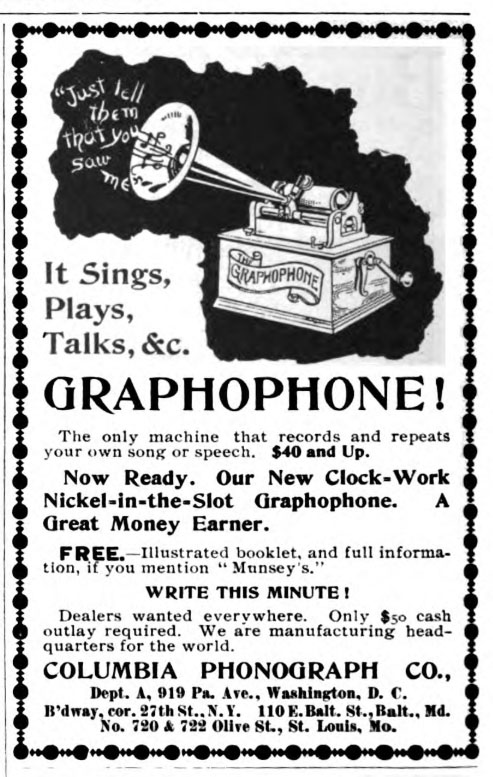
Munsey's, September
1896
This 1897 Berliner Gramophone
emphasizes the human voice aspect calling it a machine that "Talks,
Talk."
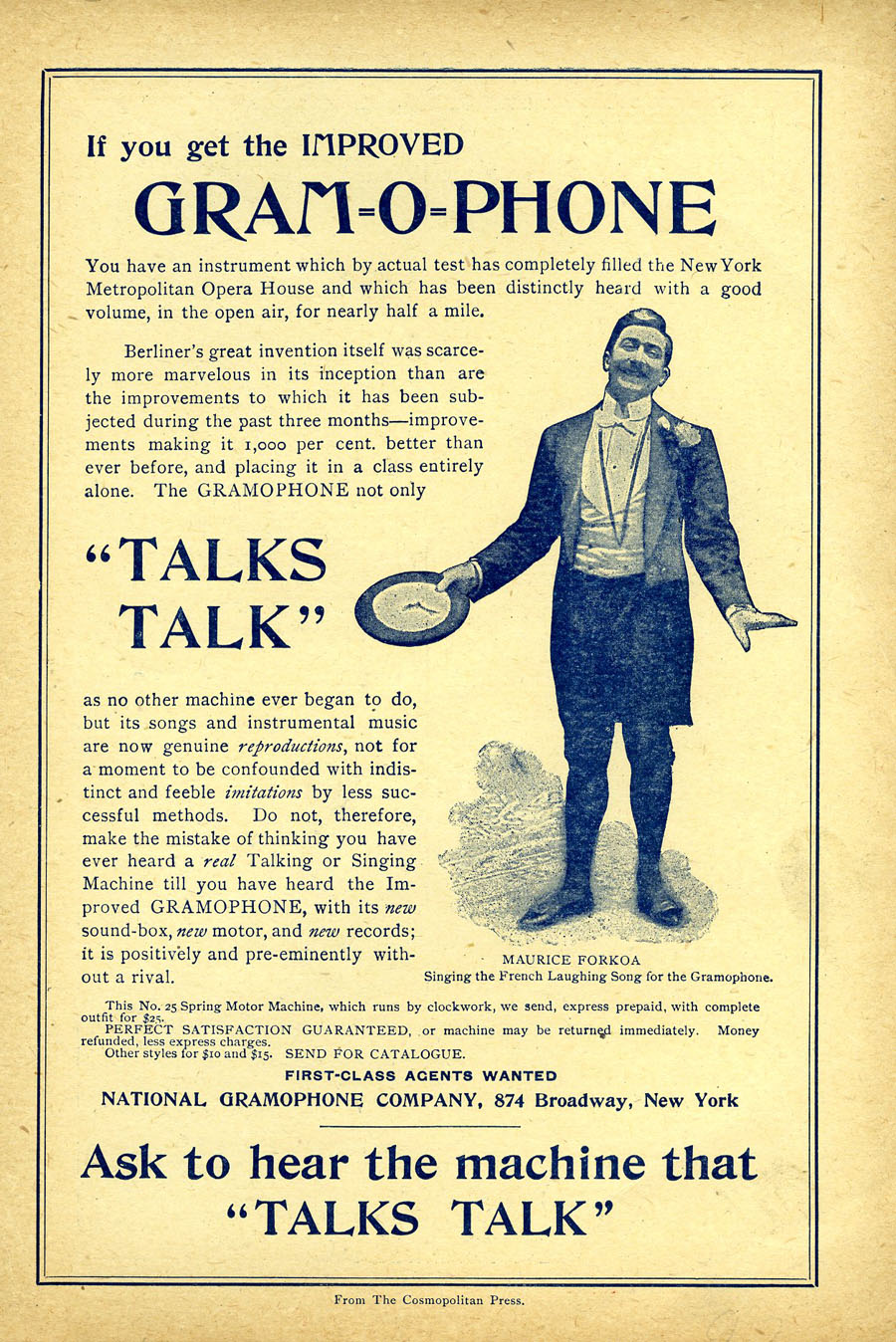
"Ask to hear the
machine that "TALKS TALK" The Cosmopolitan, 1897
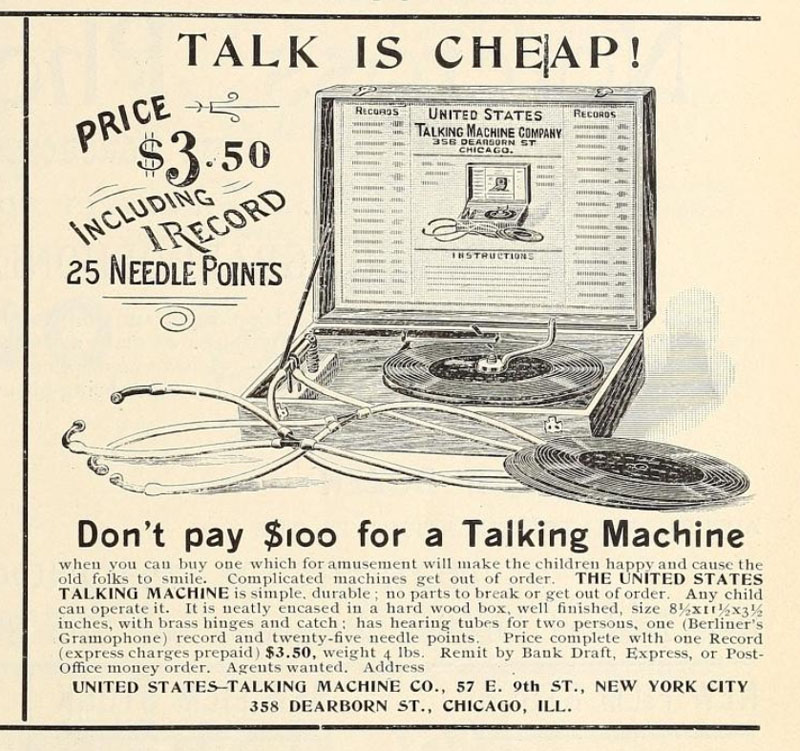
"Talk is Cheap!"
The Phonoscope, February 1898
It Speaks for Itself!
Besides being a machine that 'talks
talk,' the phonograph could advertise itself. George Graham recorded
an advertisement for the Berliner Gramophone sometime before June
1896 (the recording is not available but here is the transcript).
In the Edison Trade magazine The
Edison Phonograph Monthly of October 1904 under the heading
"An Advertising Record"
there was a letter published suggesting that it might be a good
idea to create a "good talking record that would dilate upon
the merits of your Phonographs and Records." The conclusion
of EPM was that they would make a decision in the near future but
would be glad to receive from the trade suggestions as to what such
a Record should say to a crowd of listeners."
That record was eventually created
and the January 1906 issue of The Edison Phonograph Monthly announced
its availability for Edison dealers. In February 1906 Edison sent
an offer to each Dealer entitling them to a copy of this record
which "we are loaning the trade for use in connection with
store exhibitions."The record was expressed prohibited from
being sold or given away to the public and was being loaned to the
trade for 'store exhibitions."
The following includes the 'dilated'
merits of the Phonograph detailed in the "talk" by Len
Spencer with a link to the recording "An
Advertising Record" courtesy of the UCSB
Cylinder Audio Archive.
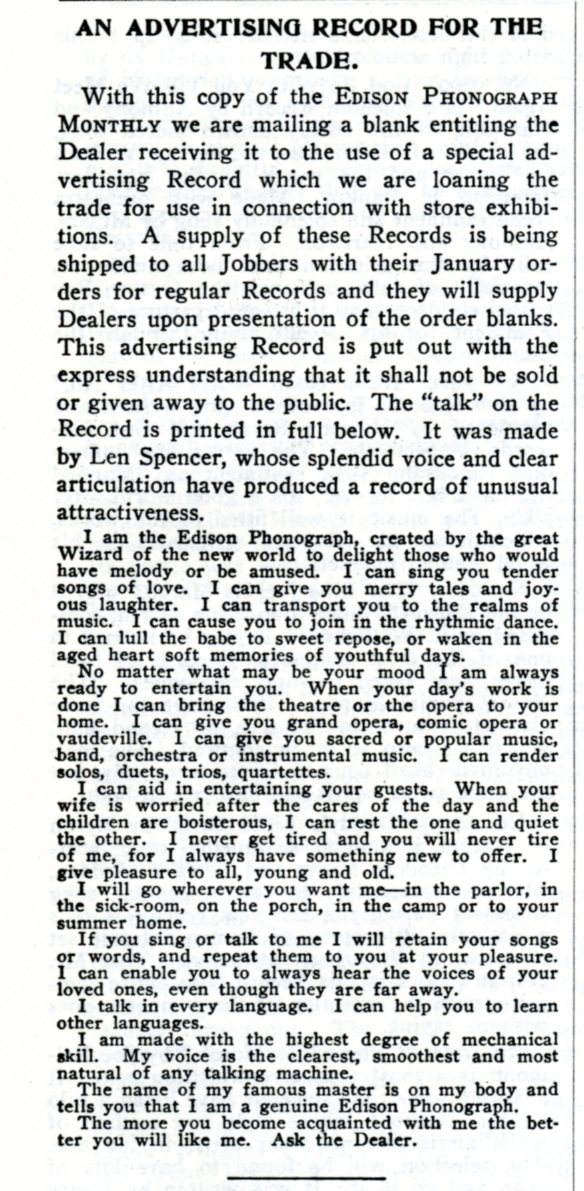
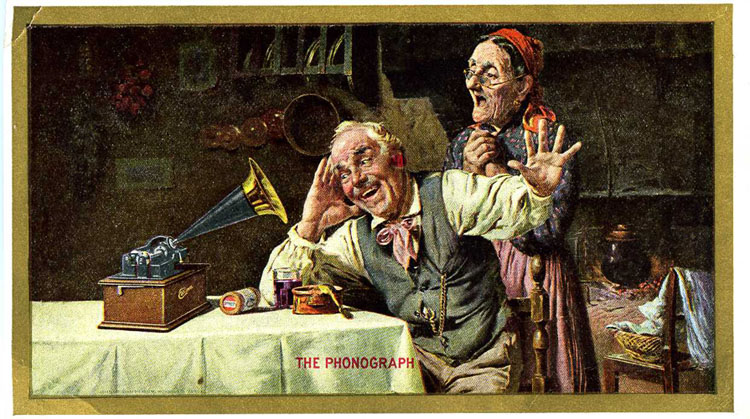
Edison Form 935 Advertising
Card - Delighted and Amazed 1905 (PM-2111)
"This famous painting
is remarkable for the delight and amazement depicted upon the faces
of the old couple upon their first hearing the Phonograph."
The success of this advertising record
was noted in the March 1906 edition of The Edison Phonograph
Monthly saying there had been so many requests for the Record
that "we may make it over, eliminating the last sentence
"Ask the Dealer," give it a number and title and put it
into the regular catalogue as a talking Record."
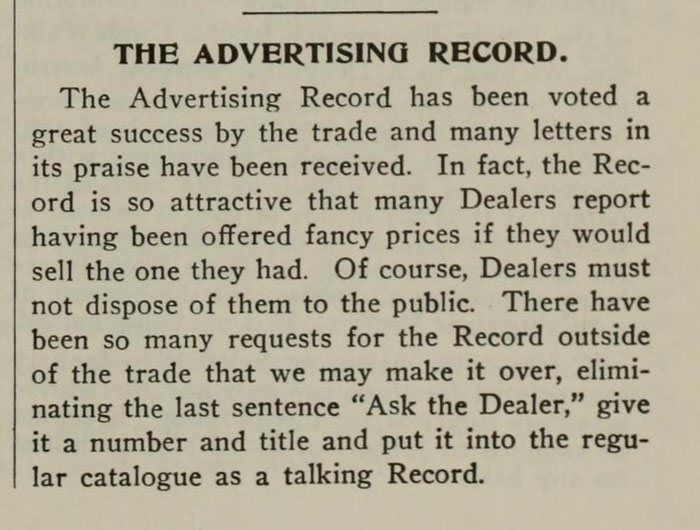
The Edison Phonograph
Monthly, February 1906
Other consumer products would use
the phonograph as their own sales representative by recording messages
that were heard on early coin-in-the-slot 'jukeboxes.' Located in
hotels, ferry depots, railroad stations, saloons, and other public
places this was an opportunity for a passerby to perhaps even hear
a phonograph playing band music or recitation for free -- with its
advertising message.
An early example of an phonograph's
use as an advertising machine was Gramophone
Record No. 641 "Advertising Plant's Baking Powder" recorded
by George Graham in Washington, D.C on May 26, 1896
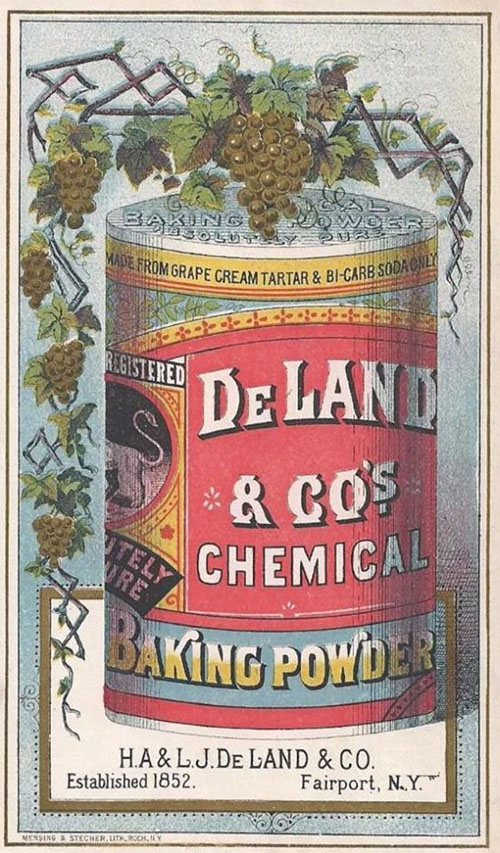
DeLand & Co Baking
Power Tradecard - circa 1890 (By Unknown author - Collection of Lynn
Purvis, Public
Domain
The Phonogram in June 1892
(1) reported how Sapolio
soap was using the public coin-in-the-slot phonographs as an advertiser.
"Go to Bloomingdale's and hear
the sweet strains of George Gaskin's tenor pouring forth in fervid
and sonorous eloquence the merits of Sapolio. Then returning,
perhaps, to your Staten Island home, stop at the ferry and listen
to Meyer's baritone, which tells you in rythmic rhyme why Sapolio
will bring life and youth to its patrons. It is enough to make
one buy tons of soap to hear the soft cadences of these great
singers pronouncing eulogies on this commonplace yet useful article,
and we congratulate the owners of Sapolio on the novel method
they have recently adopted to win and entrance the public."
Sapolio's
print advertising, as seen in a later 1908 Sapolio ad, would also
take advantage of its relationship with the phonograph, this time
with the image of the phonograph 'speaking' its advertising message.
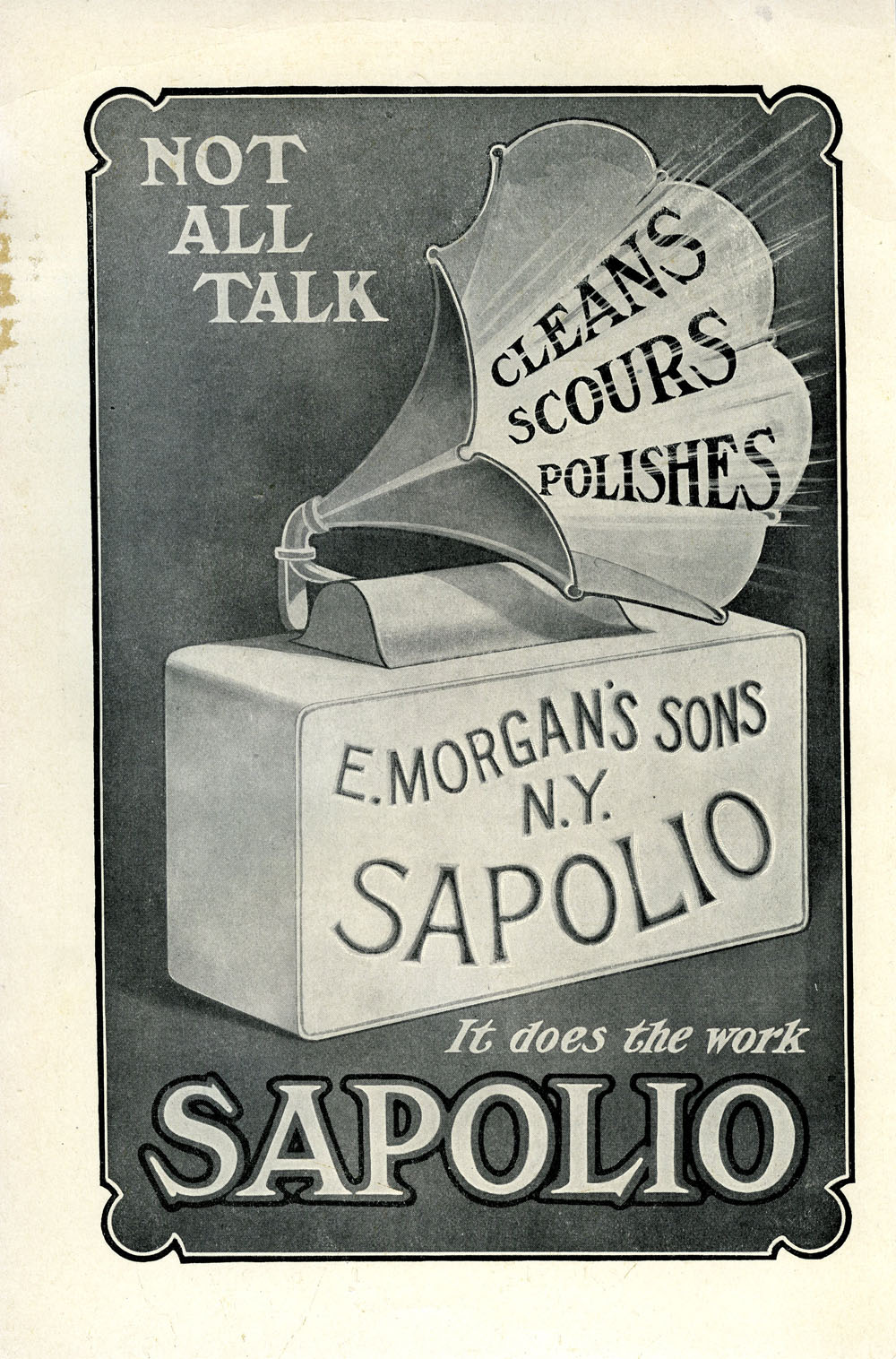
"Not all Talk,"
ad for Sapolio Soap, Appleton's magazine, 1908
The Phonogram article titled
The Phonograph Becomes the Great American Advertiser (2)
described how free entertainment was being provided by advertisers
such as Mulligan's cigarettes.
"In a prominent position
in the immediate vicinity of the Staten Island ferry an ingenious
person has placed one of the Edison phonographs, and on it there
is a legend which states that any one may hear a verse of a popular
ballad, free of cost, by simply turning a crank. This invitation
is accepted with enthusiasm by the people at large, and about
once a minute a victim steps up with a smile and starts the machine.
The following gem is a sample
what he hears:
"Oh, the minstrel
boy to the war has gone,
And when at night he
sets
In the camp-fire light,
he don't feel right
WIthout Mulligan's cigarettes.
Thus the phonograph
becomes an advertising medium of no small calibre, for it attracts
and amuses."
Trade card showing Uncle
Sam promoting Hub Gore shoes at the 1893 Columbian Exposition with
the automaton using an Edison Phonograph to "talk." (Beacon
Lith Co. Boston, 1894) (PM-0650)
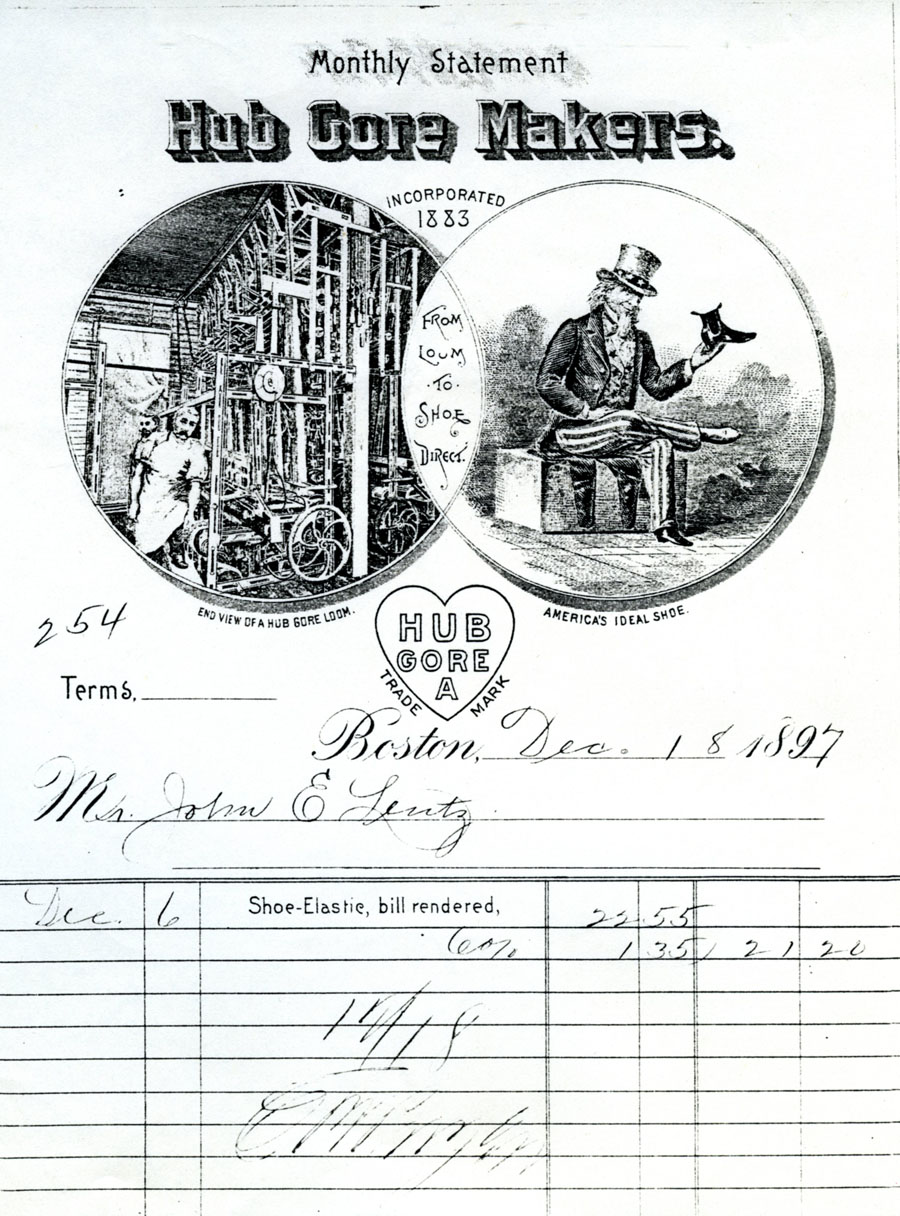
Monthly Statement Hub
Gore Makers. December 18, 1897
Courtesy of The Warshaw
Collection of Business Americana, Archives, Smithsonian Institution
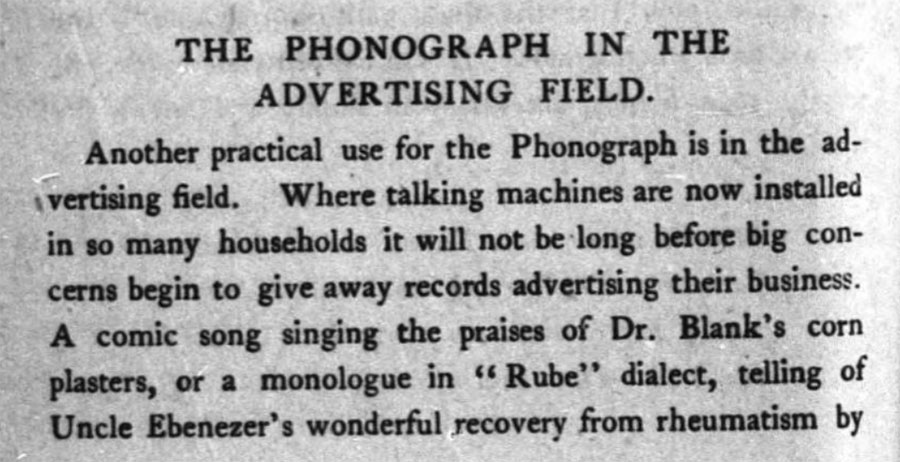

The Phonogram,
November 1902
Columbia made a special
advertising record in 1913 with one side a sample of Columbia Recordings
and on the other side "Good Night, Little Girl, Good Night"
sung by Henry Burr for the special price of 25 cents (as opposed
to their normal price of 65 cents.
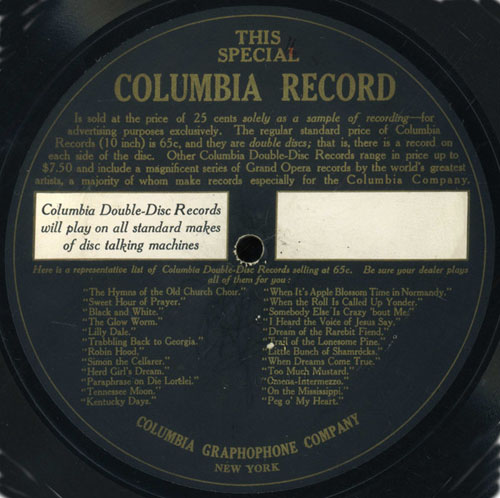
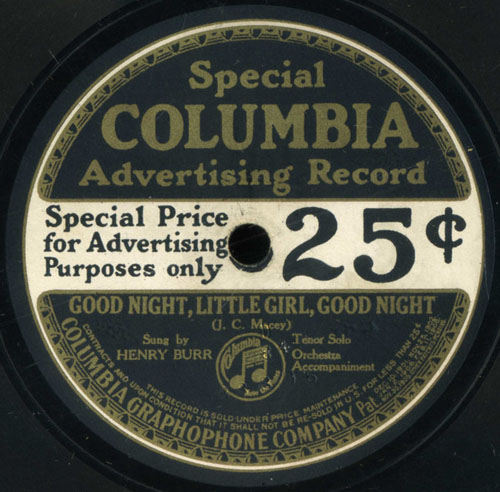
Courtesy of Discogs
The Phonograph as Resume, Advertiser,
and Entertainer
In an 1896 Letter to the Editor of
Printers' Ink it was reported that the East Atlanta Land
Company had recently been looking for an auctioneer. They heard
of Mr. W. O. Beckenbaugh who had successfully handled the auctioning
of buildings after the Chicago World's Fair and they wrote to him
asking for testimonials of his qualifications. In response Mr. Beckenbaugh
sent several 'samples' of his voice and style which he had transcribed
on cylinder records. He was immediately hired. The land company,
however, went further by placing some phonograph machines in public
spaces throughout the city. Amused crowds were apparently intrigued
to listen to these mock sales which also announced the date and
place the actual auction was to take place.
As a result "one of the largest
auction sales of suburban property ever know in the history of the
city occurred a day or two later."
 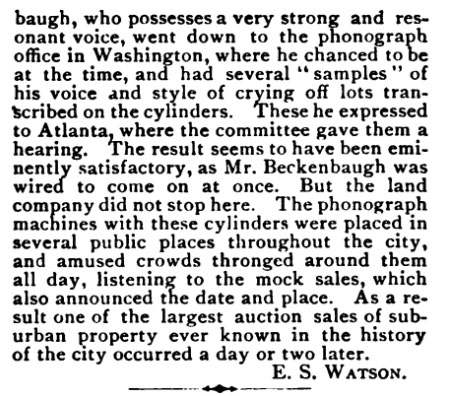
The Printers' Ink
- A Journal for Advertisers, April 29, 1896 p. 28
Records throughout the
years would be used to promote the phonograph with demonstration
records providing music, evidence of the quality of its recordings
or other product information.
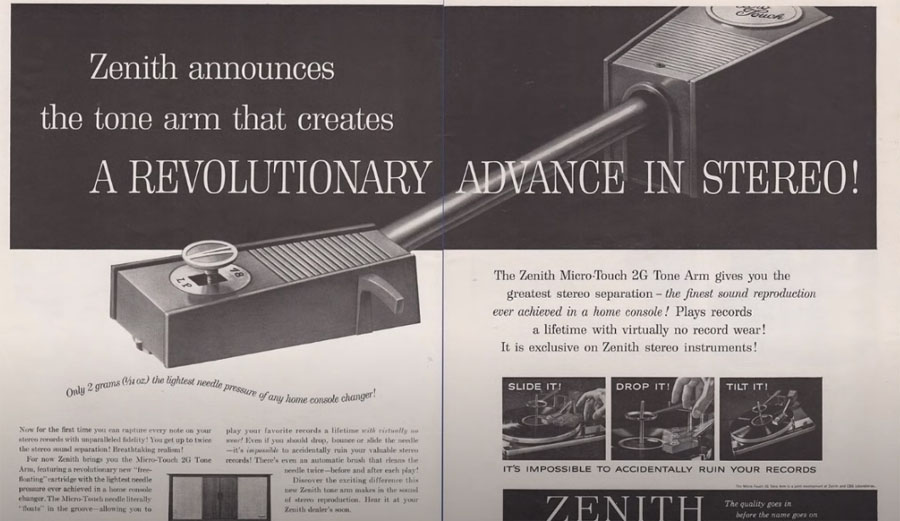
Listen to the Demonstration
Record advertising the Zenith Micro-Touch 2G Tone Arm and other
Demo Records.
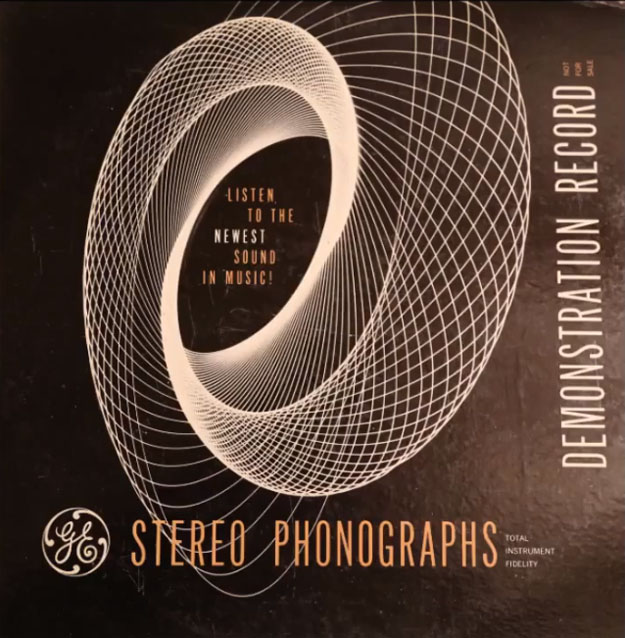
Demonstration Record
for GE Stereo
Phonographs
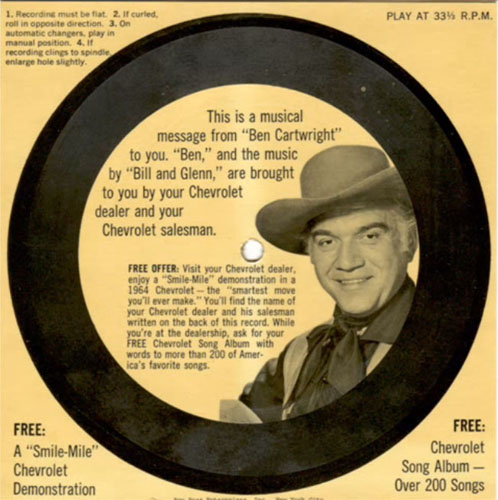 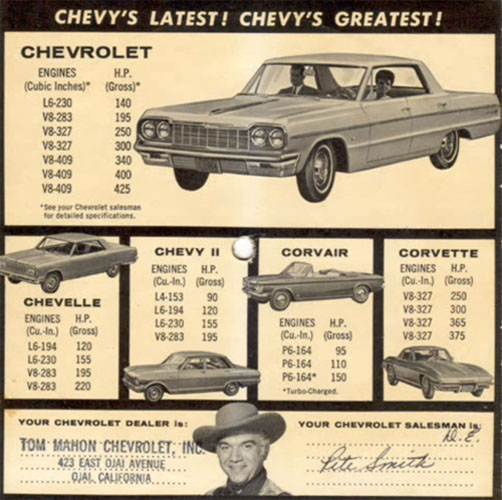
1964
Chevrolet Demonstration Record - a musical message from "Ben
Cartwright"
Bozo advertising record
for Fedder's Air Conditioners (Courtesy THE INTERNET MUSEUM OF FLEXI/CARDBOARD/ODDITY
RECORDS)
ADVERTISING AND RECORDED MUSIC
The "Our
Song" Phenomenon describes the phenomenon of hearing song
that can remind you of a moment or an event from the past. A song
is often designated by a 'couple' as an "Our Song" because
of its shared significance.
Advertisers have used this understanding
of how music and memory work together and have made music an important
part of building a brand's name and elicting emotional responses
to consumer products and services.
Early advertising phonograph records
were made for coin-in-the-slot machines where you could hear a song
for free if you first listened to the product's "message"
part of that record.
But what probably wasn't recognized
by advertisers right away was how important the song itself would
be for their product and how closely a song could be associated
with a product just by hearing a few bars of that song. Anyone growing
up watching the "Lone
Ranger" would know immediately what was about to begin
when they heard the first notes of Rossini's William Tell Overture.
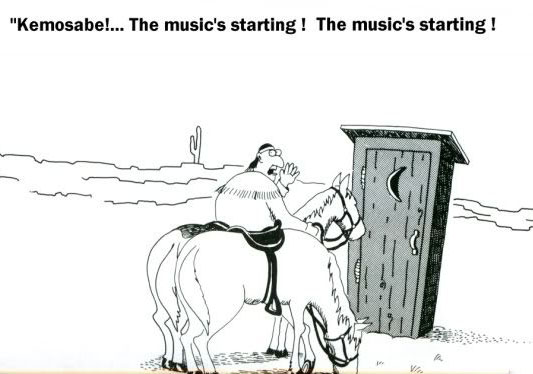
The Far Side - Courtesy
Gary Larson
Likewise, the following are a few examples
of products that have established close associations with a song.
George Gershwin's "Rhapsody
in Blue" and United Airlines.
Bob Seger and his "Like
a Rock" for Chevrolet trucks.
Cadbury's Dairy Milk Chocolates and
Phil
Collins' In the air tonight
Apple iPod - iTunes - Jet
- Are You Going To Be My Girl
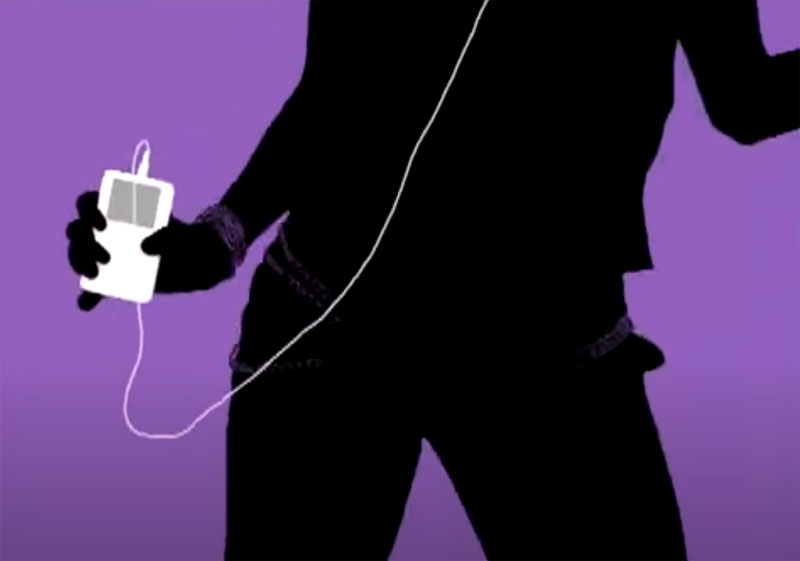


Phonographia
|

























